Further information, on these and postal seals can be found in a catalogue of stamps of Costa Rica,
produced by Dr. Hector R. Mena and available from the Socorico website.
COSTA RICA
The first seal shown below was in use as an envelope seal and illustrated on the internet.
Unfortunately the writer was outbid so the size and date of use are not yet known.
The other somewhat utilitarian seal was used in 1950 on a folded telegram but very badly damaged in opening. Only a fragment is shown.
| Updates. The above was written by Steve Hiscocks. He was referring to what is now #7 and #3. Several added. Re-numbered (twice). No pricing as yet. |
Security Underprints.
Some of the seals of Costa Rica have an interesting security device in the form of an underprint on the back.
If an attempt is made to peel off these seals, the surface is stripped from the telegram or the underprint is left on the telegram.
This makes it harder to get past the seal without detection. I have seen 3 types so far.
They all comprise the text "MINISTERIO DE ECONOMIA Y HACIENDA", or "MINISTRY OF ECONOMY AND FINANCE".
I will note what I have seen them on.
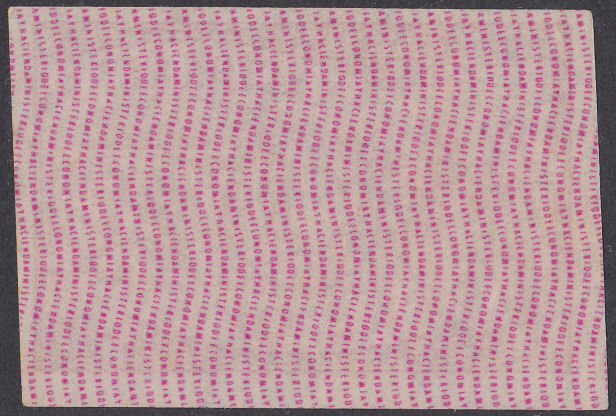 |
| Underprint Type 1 |
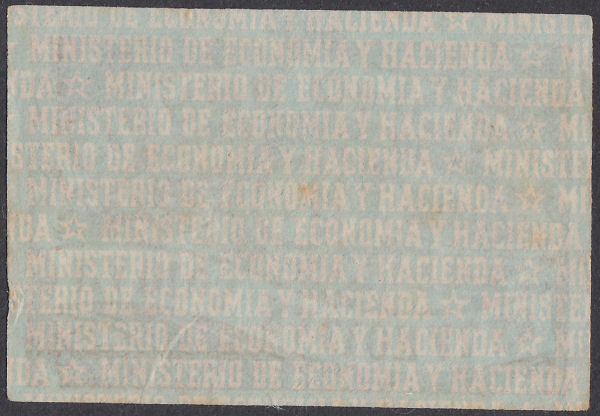 |
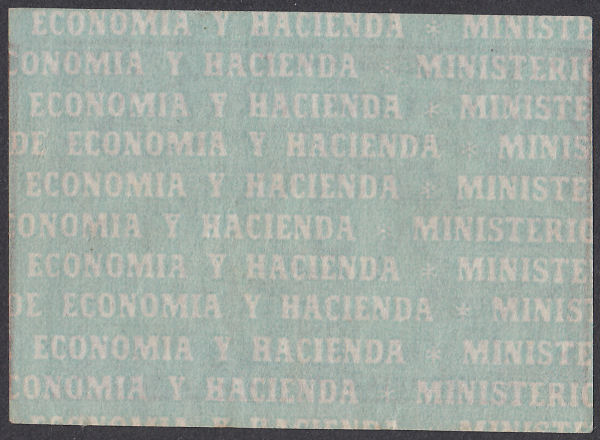 |
| Underprint Type 2 | Underprint Type 3 |
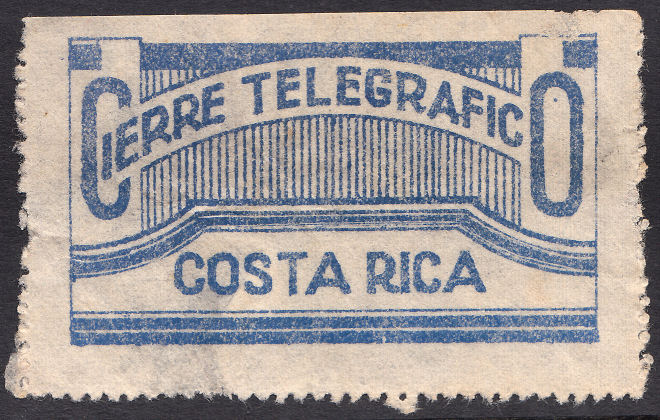 |
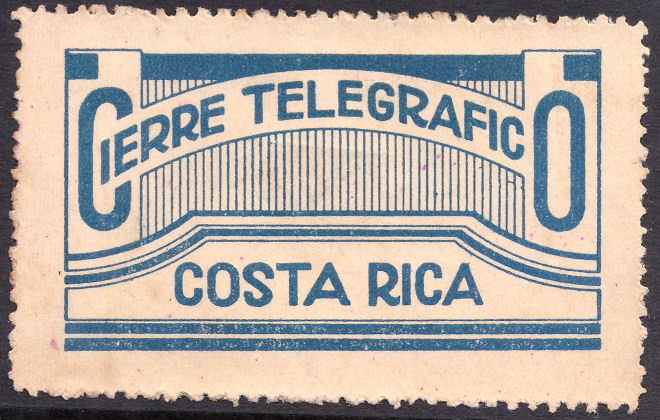 |
| #1 44.8mm. continuous side frame-lines (Perf. 12½) | #2 45.6mm. broken side frame-lines (Perf. 11¾) |
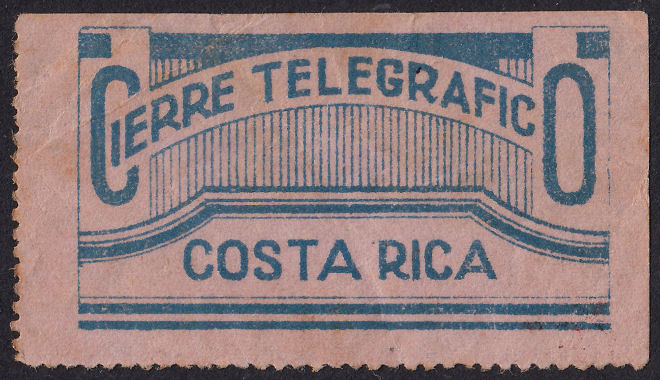 |
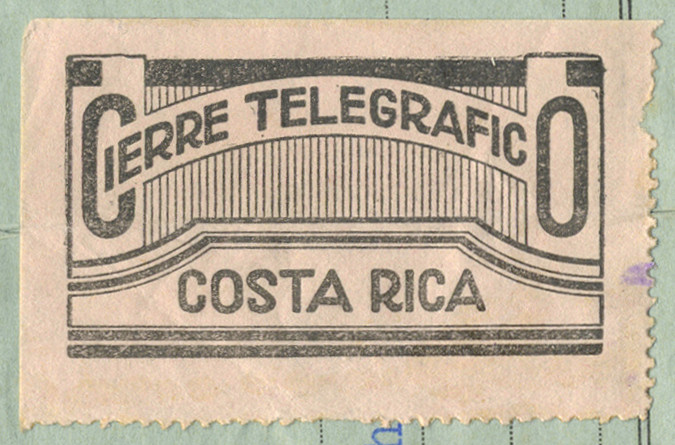 |
| #2 (RH2a) | #2 (RH2b) |
| RH # | Type. | was | Description | Mint | Used | On telegram |
|---|---|---|---|---|---|---|
| RH1 | 1 | - | Perf. 12½ between. Grey-blue (shades) on white. | 15.00 | - | - |
| RH2 | 2 | - | Perf. 11¾ Blue on cream. | - | - | - |
| RH2a | - | Blue on pink. | - | - | - | |
| RH2b | - | 1936 Black on peach. | - | - | - |
Known with CORONADO cds struck as a control mark on reverse.
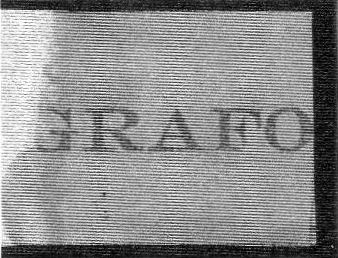 |
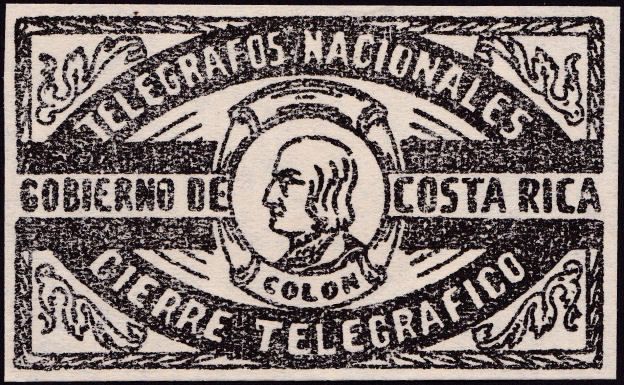 |
| #3 1950 | #4 1953-57, 50mm - Security Underprint Type 1. |
'COLON' is Spanish for 'Columbus' who landed there in 1502. Colon is also the name of the currency (equal to 100 céntimo).
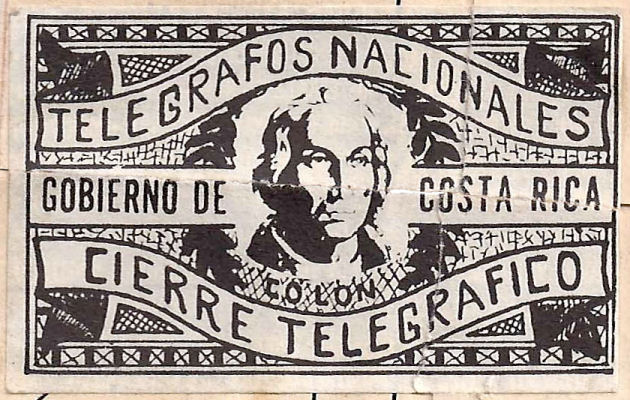 |
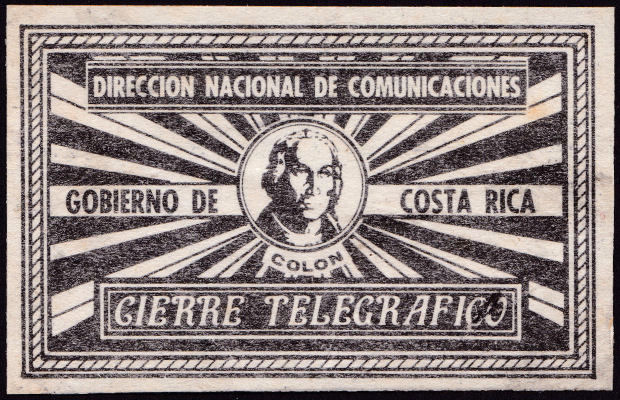 |
| #5 1962, 50mm | #6 1975, 48.6mm |
New Columbus designs.
| RH # | Type. | was | Description | Mint | Used | On telegram |
|---|---|---|---|---|---|---|
| RH3 | 3 | 2 | Imperf. Black on white. | - | - | - |
| RH4 | 4 | - | 1953-57, Imperf. Black on white. | - | - | 13.00 |
| RH4a | - | With Security Underprint 1. | - | - | - | |
| RH5 | 5 | 1 | 1962 Imperf. Black on white. | - | - | - |
| RH6 | 6 | - | 1975, Imperf. Black on white. | - | - | - |
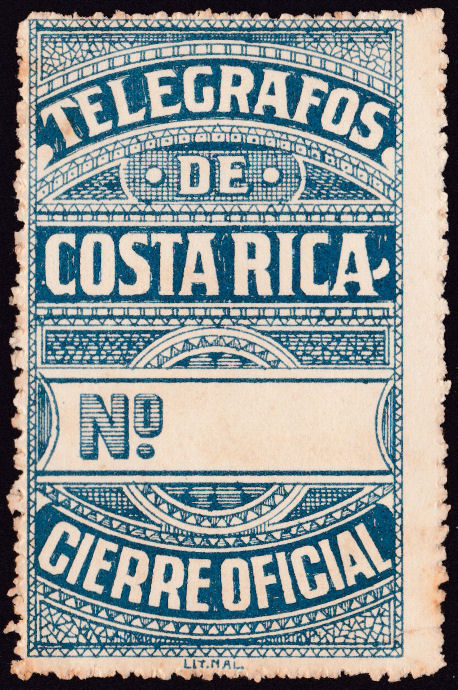 |
| #9 31.8mm wide 'LIT. NAL.' imprint |
Date ? Lithographed by Litografia Nacional in sheets of 50. Perf. 11½.
| RH # | Type. | was | Description | Mint | Used | On telegram |
|---|---|---|---|---|---|---|
| RH9 | 9 | - | Perf. Blue on white. | - | - | - |
RADIOGRAM SEALS
I have split these from the others as Dr. Mena does, since it is a good idea. I want though for them to be in chronological order.
Though I only have a date for one, there appears to be a natural progression. On this basis, I can only do a mockup for the first 2 at present.
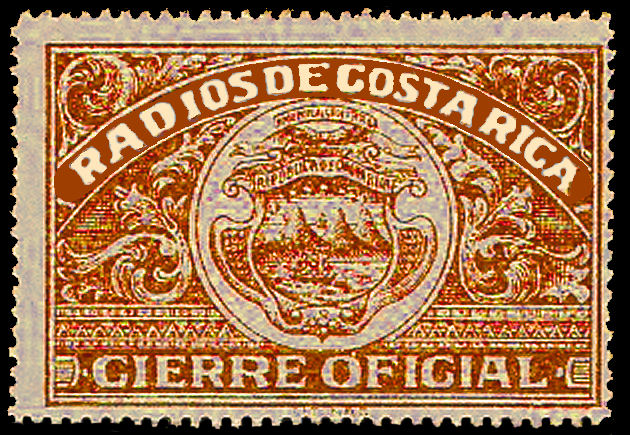 |
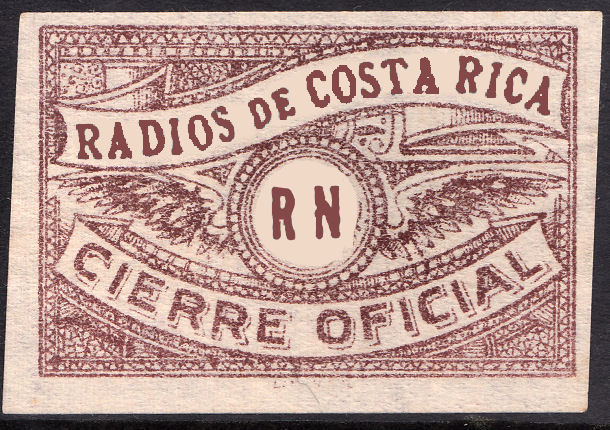 |
| #1 Mockup - design adapted from a postal seal circa 1934 | #2 Mockup - design adapted from a postal seal circa 1936 |
Anyone have real examples of either of these ?
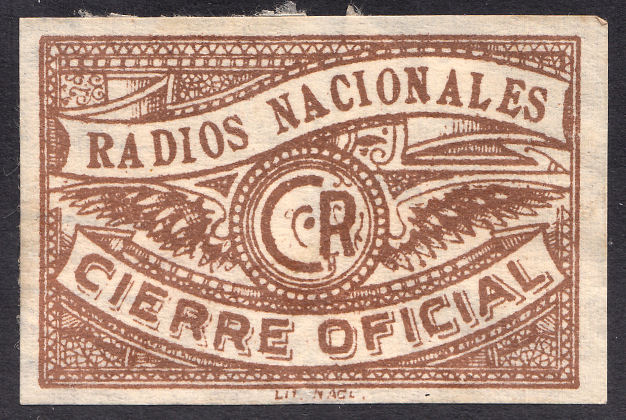 |
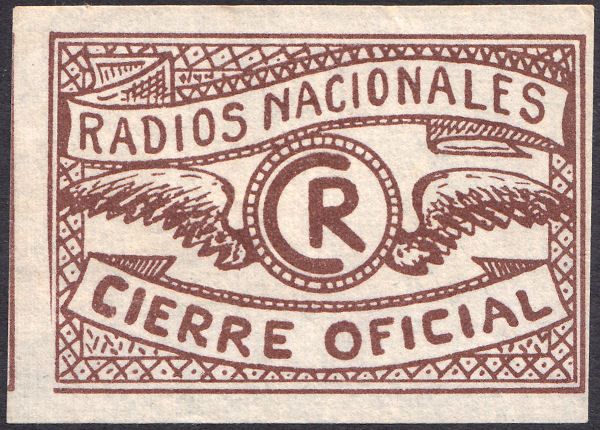 |
| #3 1958, 45.9mm. 'LIT. NACL.' imprint - Security Underprint Type 1, Type 2 or none. | #4 45.7mm. - Security Underprint Type 3. |
| RH # | Type. | was | Description | Mint | Used | On telegram |
|---|---|---|---|---|---|---|
| RHR1 | 1 | - | Date? Imperf. brown on yellow | - | - | - |
| RHR2a | - | Perforated | - | - | - | |
| RHR2 | 2 | - | Date? brown on pink | - | - | - |
| RHR2a | - | brown on yellow | - | - | - | |
| RHR2b | - | brown on buff | - | - | - | |
| RHR3 | 3 | - | 1958, Imperf. brown (shades) on white. | - | - | - |
| RHR3a | 3 | - | Red-brown, Security Underprint Type 1. | - | - | - |
| RHR3b | 3 | - | Dark brown, Security Underprint Type 2. | - | - | - |
| RHR4 | 4 | - | Date? Imperf. Reddish brown on white. SU-3. | - | - | - |
Though not explicitly saying 'Telegrafos' on the seals, these were used on RadioTelegrams.
Stationery
Here is a rather ornate "Formula No. 11" Delivery telegram used 22 January 1918 for a telegram from a Doctor Rice in Liberia to his wife.
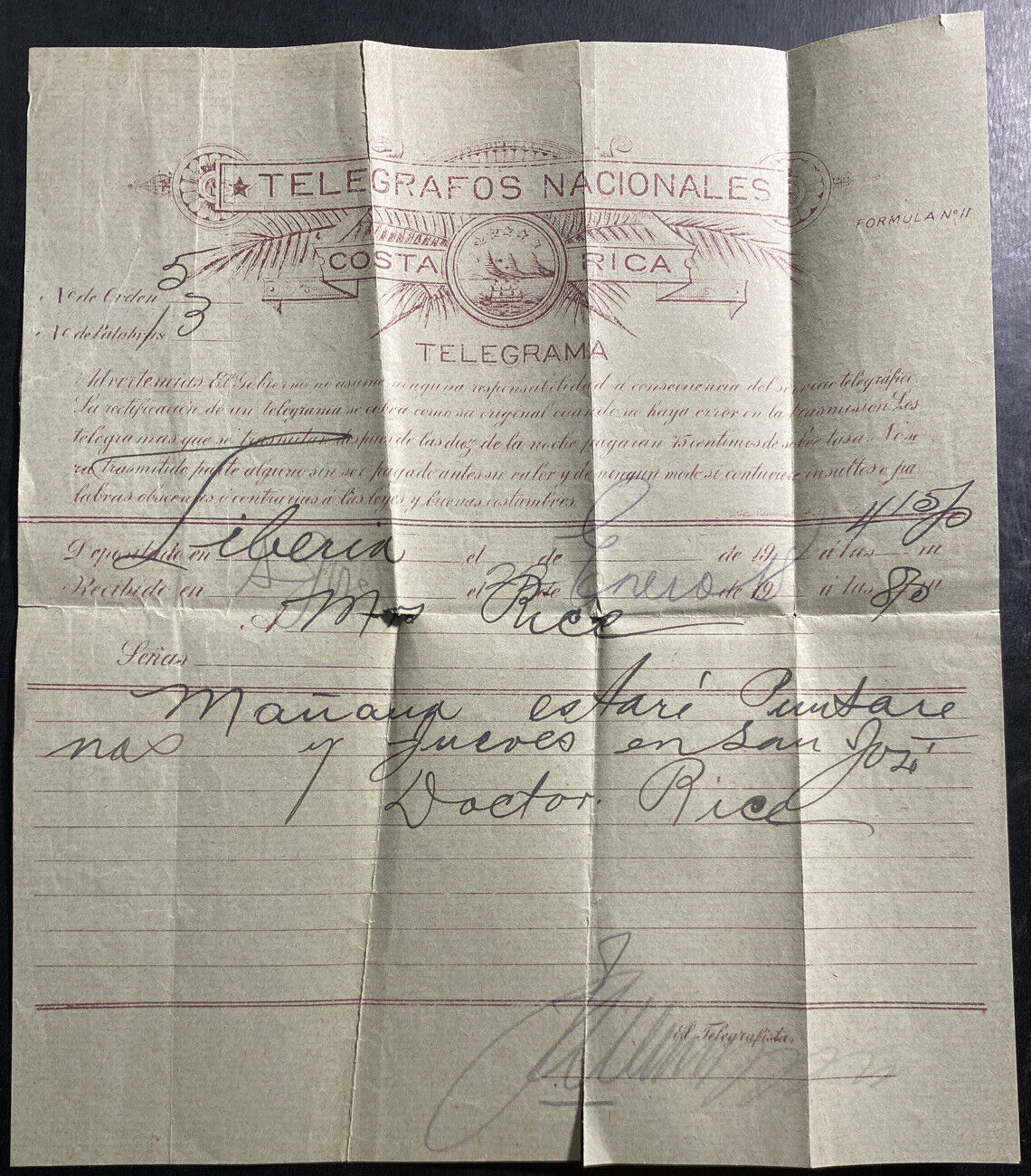
Photo courtesy of Aztec Collectables, click on it for the listing.
The delivery envelope was similarly ornate. Nothing on the back.
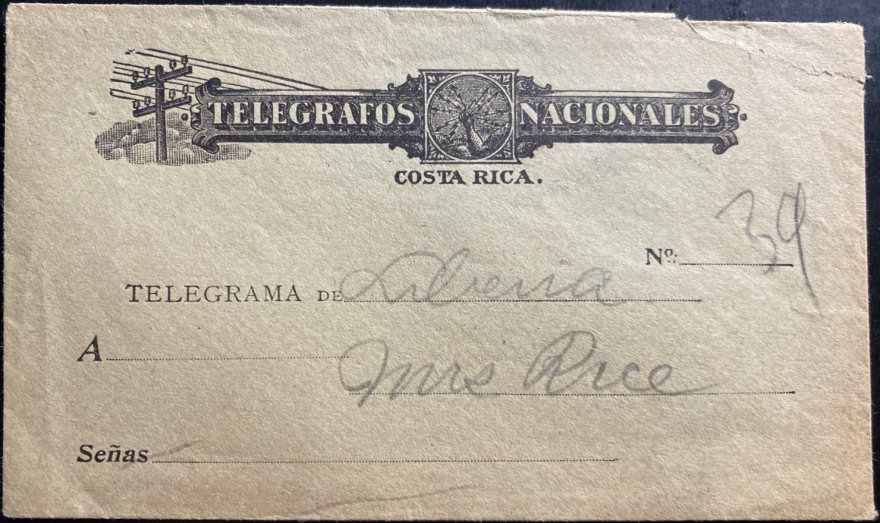
Photo courtesy of Aztec Collectables, click on it for the listing.
Interestingly, the recipent of this, Doreen (Dairine) Vanston, is famous enough to have her own
Wiki page.
She was in Costa Rica in the late 1920s and early 1930s, as well as most of 1947.
Image courtesy of Antonio Torres (click image for Delcampe listing).
This is similar to the last except with the addition of a boxed "Sirvase usted comunicar al Director General de Telégrafos
cualquier deficiencia que notare en ei servicio telegráfico." and "195" at bottom-left.
I am not sure what the number (195) at bottom-left is, but it seems very variable.
Telegram envelopes (about 150mm x 80mm) at 150 dpi.
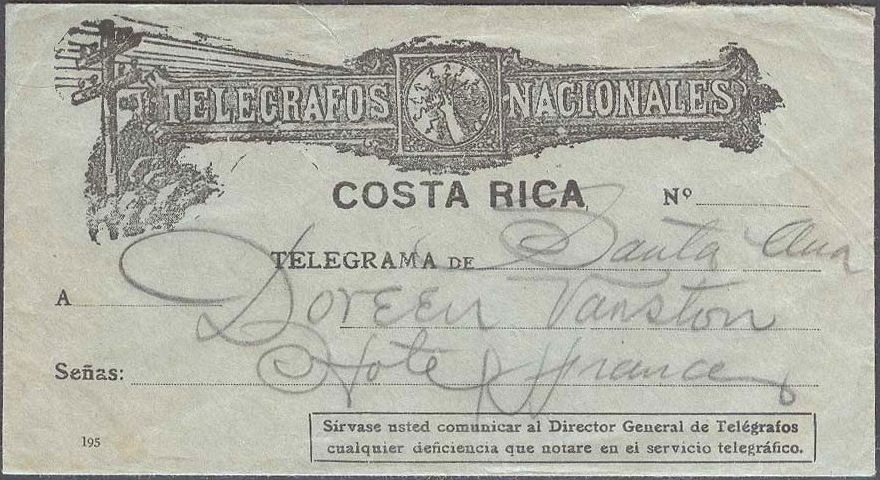
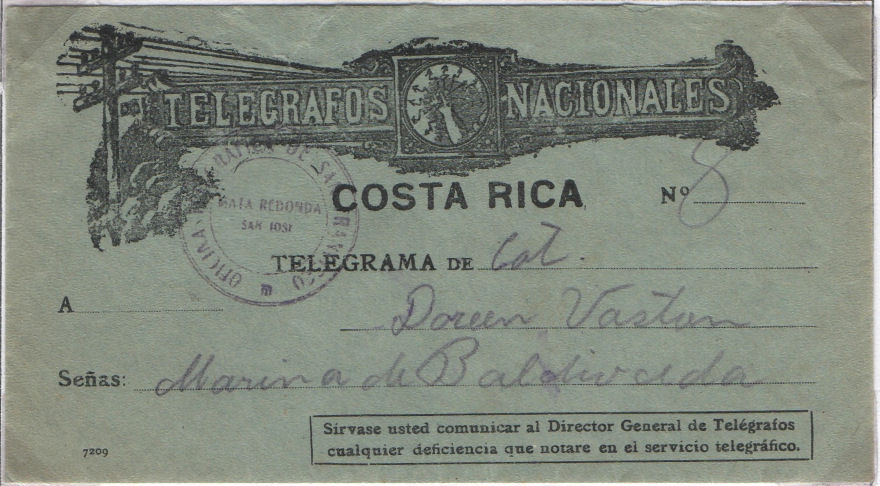
Another to the same person (though mis-spelled). This has a different number at bottom-left, but looks very similar. No. 7209
Image courtesy of Paul & Les Bottomley.
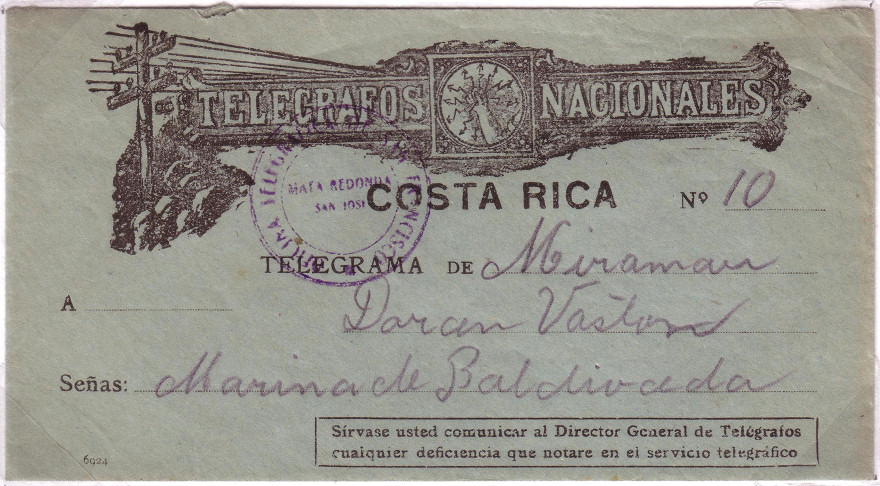
Another to the same person (with questionable spelling). Same address. No. 6924
Image courtesy of Rolf Lamprecht who also has the contents, shown below.
Telegrams at 75 dpi
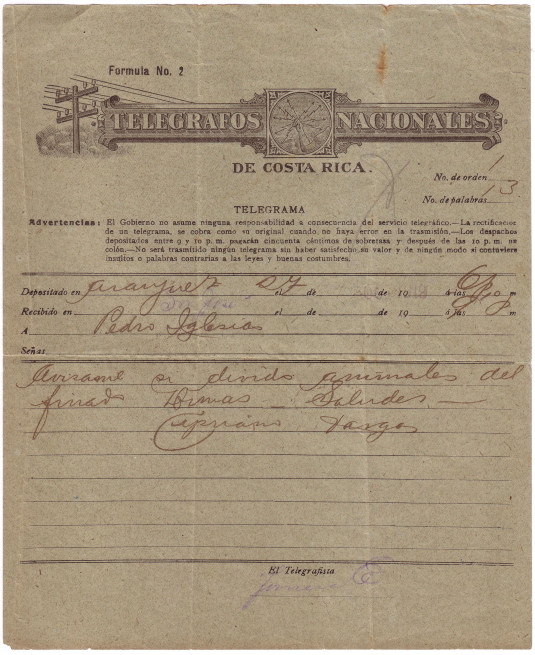
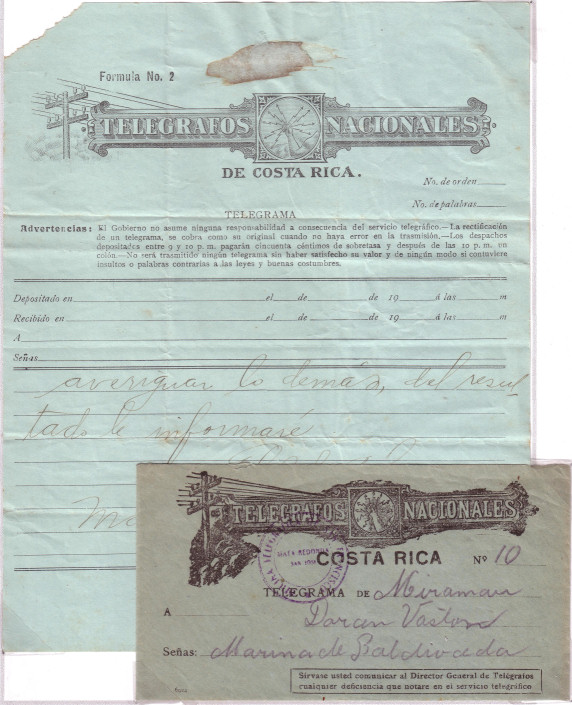
The brown Telegram is dated 27 October 1919. The later undated Telegram to Doreen Vanston appears to be the same apart from the paper.
Both images courtesy of Rolf Lamprecht.
CROATIA
This is, alphabetically, the first of several countries which present problems due to the
writer's lamentable ignorance of late nineteenth and early twentieth century middle-European history.
Telegrams bearing seals which look like those of Austria also have the names of cities now in other countries.
In the Austro-Hungarian Empire, in the Russian Empire, in the old Yugoslavia there have been many changes.
For the present purposes I have simply assumed that a seal sold to me as Croatian or Serbian or Czechoslovakian
is indeed from that country and I hope that knowledgeable readers will put me right where I have gone astray.
| Updates. The above was written by Steve Hiscocks. His confusion stems partly from considering Croatia to be a 'country' in the 'telegraphic era'. Though there is a Republic of Croatia now, it has only existed as such since 1991 when it separated from Yugoslavia. It became part of Yugoslavia after the breakup of Austria-Hungary in 1918. During the whole of the period in question Croatia was a part of Austria-Hungary or Yugoslavia, though from 1941 to 1945 it was briefly an 'independent state' under Nazi control after Yugoslavia was invaded. I have moved double-headed eagle types to the Austria-Hungary section and just list post-1918 types here. Capital: Zagreb. No pricing as yet. |
 |
 |
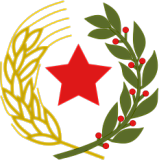 |
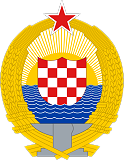 |
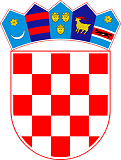 |
| 1939-41 autonomous province within Yugoslavia. |
1941-5 independent (Nazi controlled) state. |
1943-47 Federal State of Croatia. |
1947-90 Socialist Republic. |
1990 onwards Republic of Croatia. |
Created as an independent state under Nazi control.
( Serbo-Croatian: Nezavisna Država Hrvatska, Независна Држава Хрватска, NDH )
The seals used in the Kingdom of Croatia-Slavonia (1868-1918) are listed separately.
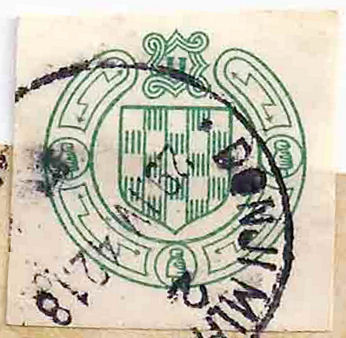 |
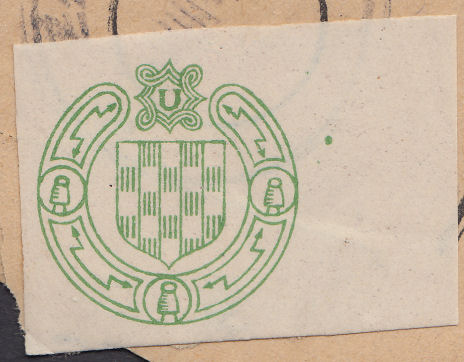 |
| #1 1941-2, 22.1mm | #2 1943-5, 22.1mm (mirror image) |
I do not know the significance of the change to a mirror image.
The shading on the insulators of similar Yugoslavian (and Austrian) seals up to 1941 was on the right, but after 1945 continued on the left,
though Austrian seals remained with shading on the right.
The mirroring is not exact as there are other minor changes to the arrows and the shading on the insulators.
the 'U' at the top stands for USTAŠA.
| RH # | Type. | was | Description | Mint | Used | On telegram |
|---|---|---|---|---|---|---|
| - | - | 1 | Moved to Austro-Hungarian Empire | - | - | - |
| - | - | 2 | Moved to Yugoslavia | - | - | - |
| RH1 | 1 | - | 1941-2 Imperf. Bluish green on white. Arms of Croatia and insulators. | - | - | - |
| RH2 | 2 | 3 | 1943-5 Mirror image. Yellowish green. | - | - | - |
| - | - | 4 | Moved to Yugoslavia | - | - | - |
In 1942, a version of the Yugoslavian telegrams with the Croatian arms was used extensively in occupied Yugoslavia.
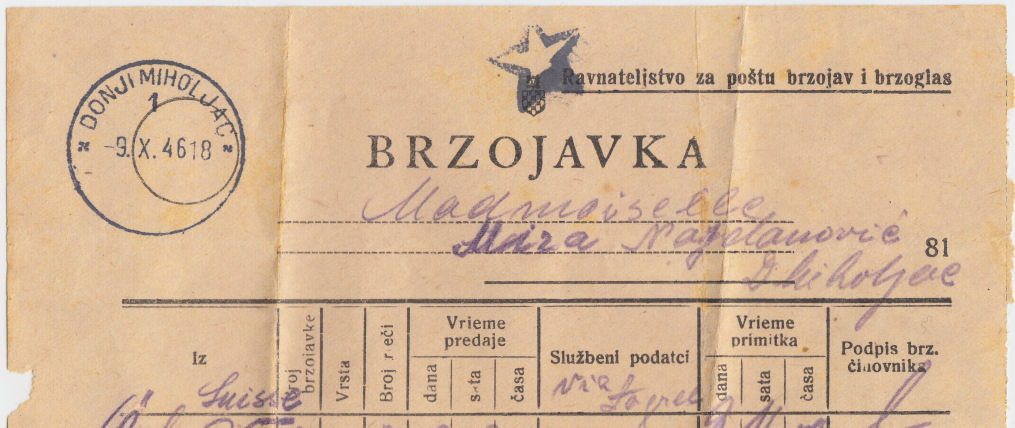
At the end of the war, these forms were used with the Croatian arms overprinted with a star in Croatia, or the Yugoslavian arms elsewhere.
If anyone can provide scans to help with this, I am happy to give appropriate credit.


